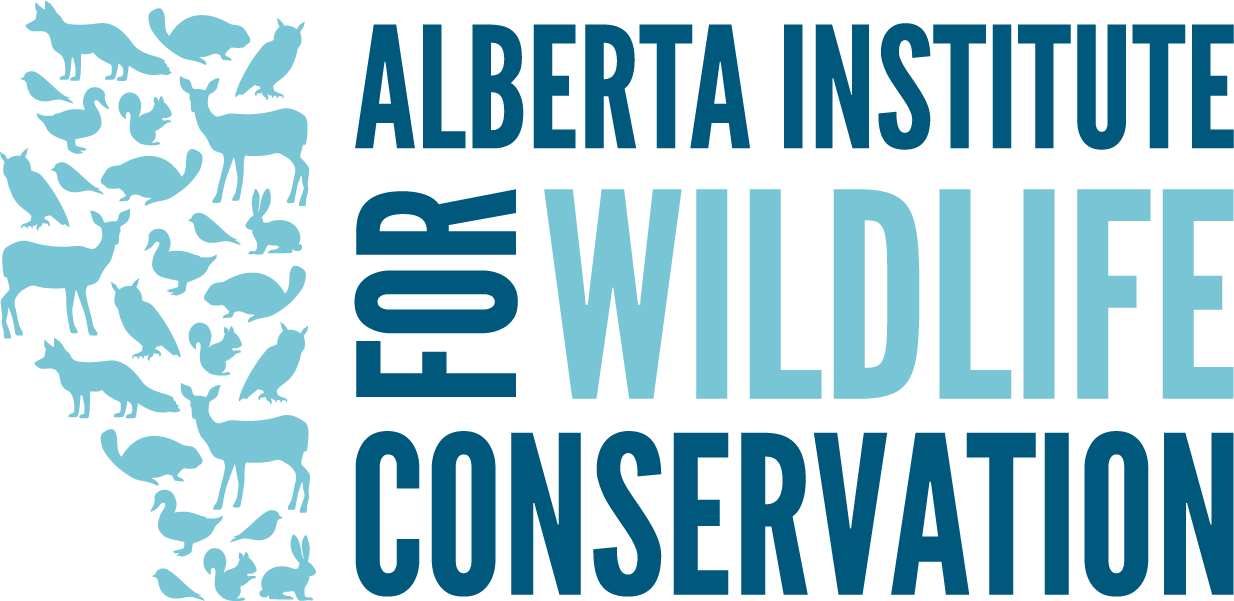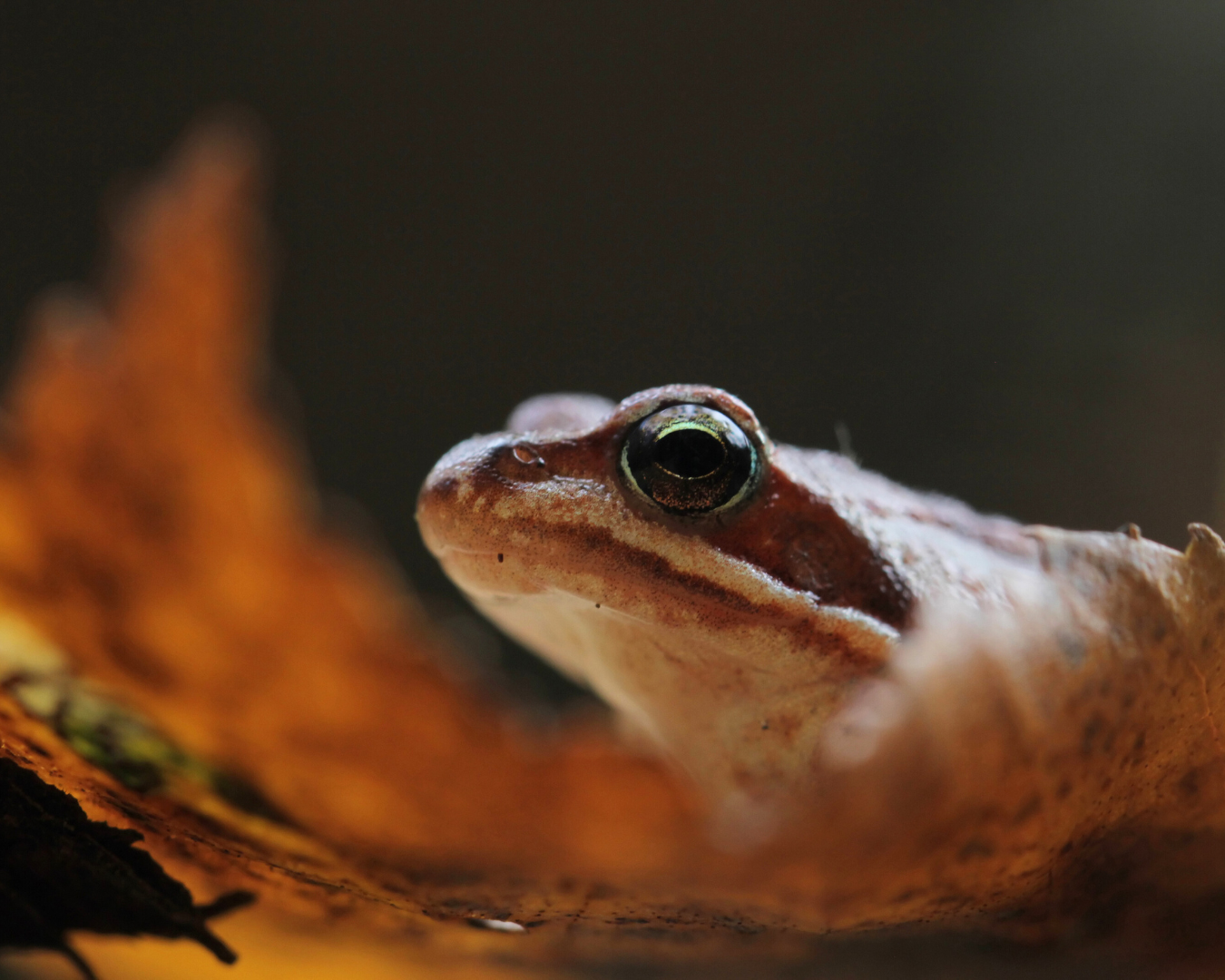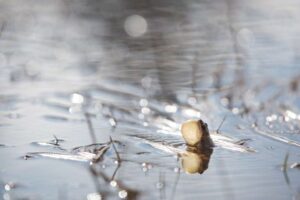By Chelsea Blyth
Alberta is home to a diverse array of wildlife, among the province’s lesser known yet equally fascinating creatures is the wood frog (Lithobates sylvaticus). Found in forests, wetlands and even urban green spaces, the wood frog is one of Alberta’s most widespread amphibians. Known for its incredible ability to survive extreme cold and its expanding range, this species plays an essential role in our local ecosystems.
Habitat & Distribution
Wood frogs are remarkably adaptable and can be found across much of North America, from the boreal forests of Canada to the Appalachian Mountains of the United States. In Alberta, they thrive in a variety of habitats, including deciduous and coniferous forests, wetlands and even the foothills of the Rocky Mountains.1 Unlike some amphibians that require large bodies of water, wood frogs can survive in small temporary ponds and marshes, making them highly resilient to changing landscapes.
As Alberta experiences shifts in climate and land use, wood frogs are expanding their range further north and west. This adaptability suggests they may continue to spread as environmental conditions change, but it also raises concerns about their interactions with other species and potential shifts in local ecosystems.2
The Prey and the Predators
Wood frogs are opportunistic feeders, consuming a diet rich in insects, spiders, worms and other small invertebrates.3 As tadpoles, they primarily feed on algae and organic debris found in their aquatic environments. Their feeding habits help control insect populations, making them an important component of Alberta’s natural pest management system.
Despite their adaptability, wood frogs face a range of predators at different life stages. Tadpoles fall prey to aquatic insects, fish and birds, while adult frogs are hunted by snakes, mammals and larger birds. Their primary defense mechanism is their cryptic coloration—ranging from brown to tan with a distinctive dark eye mask—which helps them blend into leaf litter and avoid detection.
Surviving Alberta's Winters
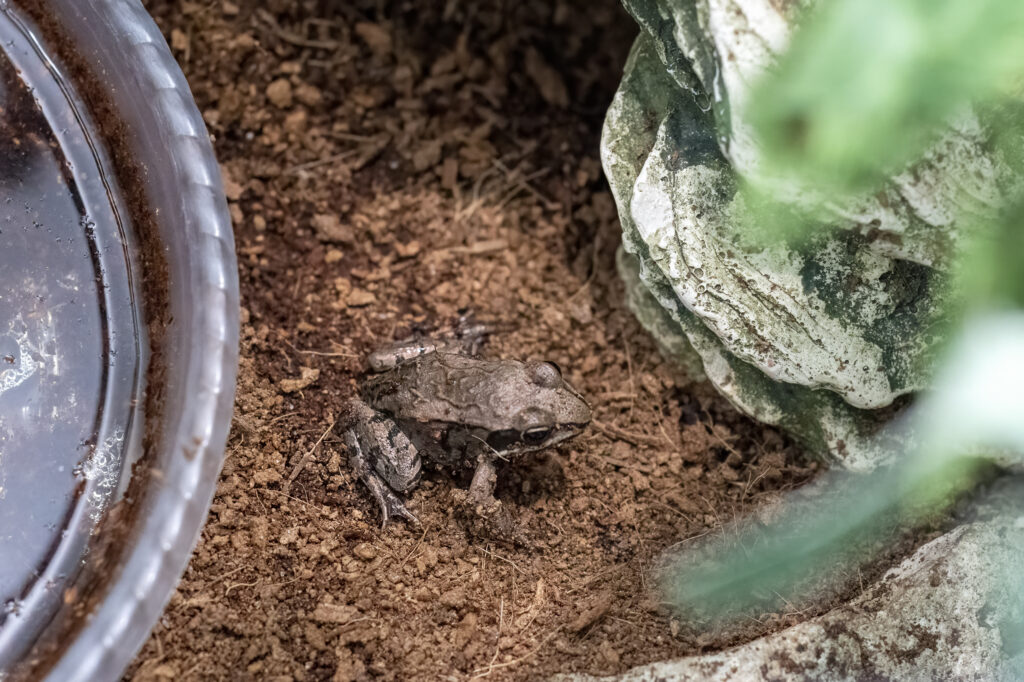
Perhaps the most astonishing characteristic of wood frogs is their ability to survive freezing temperatures. Unlike most amphibians, which must seek out unfrozen water bodies or burrow deep underground to hibernate, wood frogs tolerate being frozen solid. As temperatures drop in the fall, wood frogs produce high concentrations of glucose in their cells, acting as a natural antifreeze. This adaptation allows them to survive even as ice forms in their bodies, stopping their heart and breathing until they thaw in the spring.4
This remarkable ability not only makes them one of the most cold-tolerant amphibians in the world but also allows them to emerge and breed early in the spring—sometimes while there is still snow on the ground. This early breeding season gives their tadpoles a head start, ensuring they develop before seasonal wetlands dry up.
Conservation Status & Threats in Alberta
Although wood frogs remain relatively abundant in Alberta, they are not without threats. Habitat destruction due to urban development, agriculture and resource extraction reduces the number of breeding sites available. Wetland drainage, in particular, poses a significant risk by eliminating essential habitats where wood frogs lay their eggs.1
Another major concern is pollution, especially from pesticides and road salt. Amphibians have highly permeable skin, making them particularly sensitive to contaminants in water and soil. Studies suggest that exposure to chemicals can lead to developmental deformities, reduced reproductive success and increased mortality in wood frog populations.2
Climate change may also impact wood frogs by altering precipitation patterns and increasing the frequency of droughts, potentially reducing the availability of the temporary ponds they rely on for breeding. However, their expanding range suggests they may be able to adapt to some of these changes—at least for now.
The Future of Wood Frogs in Alberta
Wood frogs are an excellent example of nature’s resilience. Their ability to survive freezing temperatures, thrive in diverse habitats and adjust to environmental changes makes them one of Alberta’s most adaptable amphibians.
Protecting wetlands, reducing pollution and monitoring populations will be essential steps in maintaining healthy wood frog numbers. Residents of Alberta can help by supporting wetland conservation initiatives and minimizing pesticide use. By ensuring their survival, we help maintain the health of our ecosystems and preserve a species that has adapted to some of Canada’s most extreme conditions.
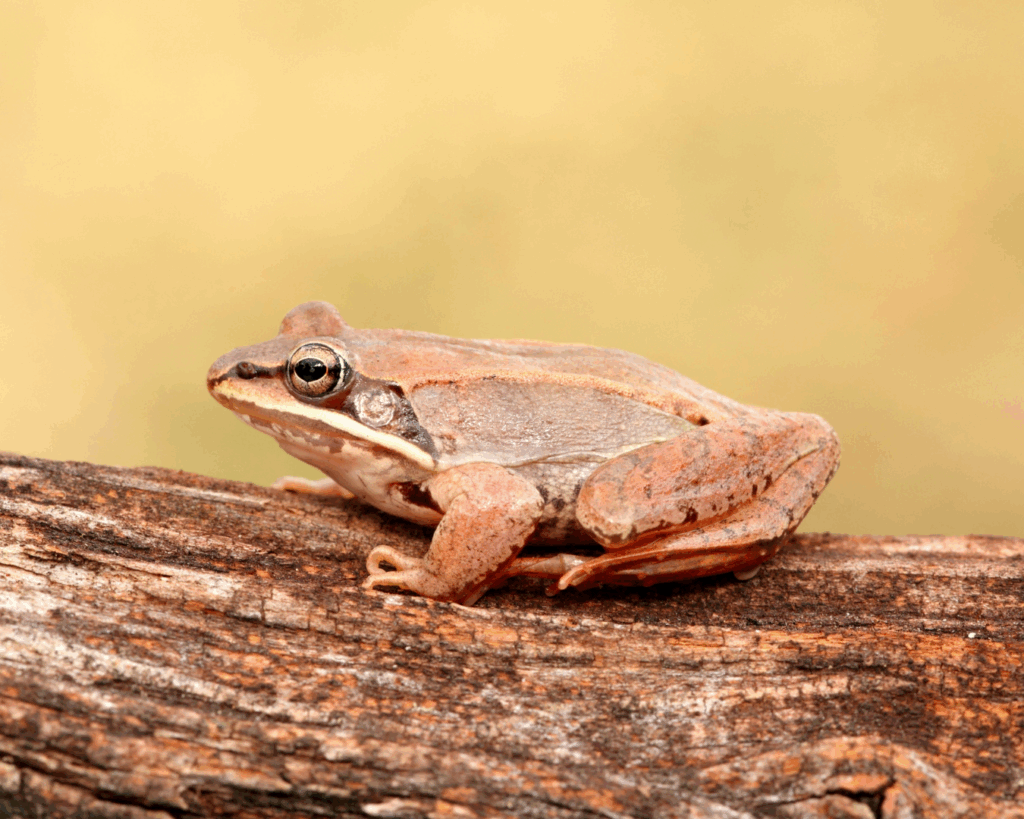
References
- A. P. Russell and A. M. Bauer, The Amphibians and Reptiles of Alberta: A Field Guide and Primer of Boreal Herpetology, 2nd ed. (University of Calgary Press, 2020)
- COSEWIC, COSEWIC Assessment and Status Report on the Wood Frog Lithobates sylvaticus in Canada (Committee on the Status of Endangered Wildlife in Canada, 2009).
- R. Powell, R. Conant, and J. T. Collins, Peterson Field Guide to Reptiles and Amphibians of Eastern and Central North America (Houghton Mifflin Harcourt, 2016).
- K. B. Storey and J. M. Storey, “Molecular Physiology of Freeze Tolerance in Vertebrates,” Physiological Reviews 97, no. 2 (2017): 623-665.
